Success Stories
Cord blood treatments have helped save and bring positive change to the lives of many young people suffering from various health conditions including leukemia and autoimmune disorders.
Since the first cord blood transplant, in 1988, patients and families have used umbilical cord cells to treat diseases like leukemia, lymphoma and anemia. Here, you’ll find stories of hope from patients that overcame their disease with support from their families, guidance from experienced medical professionals, and the advantages given through a cord blood transplant.
Stories of success
- Gracie Gregory—Diagnosed with autism at 2 years old.
- Anthony Dones—Diagnosed with osteoporosis at 4 years old.
- Brad Harden—Diagnosed with acute myelogenous leukemia at 22 years old.
- Diana Tirpak—Diagnosed with both acute myelogenous leukemia and chronic leukemia.
- Erik Haines—Diagnosed with Krabbe disease (globoid cell leukodystrophy) at 2 years old.
- Gayle Serls—Diagnosed with acute lymphoblastic leukemia.
- Granton Bayless—Diagnosed with severe combined immunodefiency syndrome (SCIDS) at 6 months old.
- Heidi Tweten—Diagnosed with Diamond Blackfan Anemia at 10 months old.
- Jaclyn Alabanese—Diagnosed with acute myeloid leukemia at 15 years old.
- Jessica Hahn—Diagnosed with osteosarcoma at 8 years old.
- Katherine Marguerite-Sutter—Diagnosed with acute myelogenous leukemia (AML) at 5 years old.
- Keone Penn—Diagnosed with sickle cell anemia and suffered a stroke at 5 years old.
- Mitch Santana—Diagnosed with infantile acute lymphocytic leukemia at 9 months old.
- Nathan Mumford—Diagnosed with leukemia.
- Robert Lopez-Lengowski—Diagnosed with acute myelogenous leukemia at 9 years old.
- Spencer Barsh—Diagnosed with ALD (adrenoleukodystrophy) at 9 years old.
- Susan Fister—Diagnosed with acute mylogenic leukemia (AML).
Many stories listed here came from younger patients that needed a stem cell transplant but were unable to find a correct match. This is where cord blood is most valuable—while bone marrow and other stem cell sources require close donor matching, cord blood cells are much more adaptable.
Read more about the different types of stem cell sources, and why cord blood’s adaptable qualities are so valuable.

